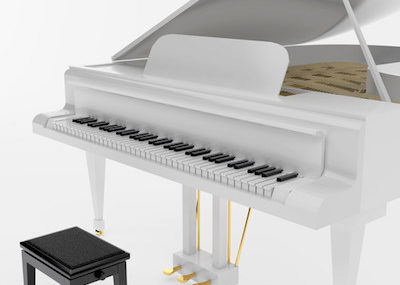Why you need them? Don’t select keyboard without them.
Buying a piano for the beginner in your life? Thinking of purchasing a keyboard to save on space and money? Don’t forget the pedals.
Many people try and go the least expensive way to bring music into their lives, only to realize that they didn’t purchase an instrument they could grow with over time.
When learning to play the piano, you’ll generally start with the keys. But very quickly you’ll incorporate the pedals into your music. They aren’t difficult to learn or use, and can make your music sound even better. 
Sustain Pedal
The sustain pedal (the right pedal) is the most frequently used of all pedals. This is why you’ll find sustain pedal inputs feature even on beginning keyboards.
A piano consists of a series of strings that are hit by hammers when keys are pressed. When the key is released, the hammer returns to its place, resting the string and stopping the tone. To prevent strings from other unplayed nots resonating when notes are hit, a damper bar sits on the strings to keep those strings quiet. When the sustain pedal is depressed, this damper bar is lifted. The notes will continue to ring out after the keys are released.
Sostenuto Pedal
The sostenuto pedal (middle pedal) is similar to the sustain pedal. When depressed, only the notes that are being played at that point will sustain; any notes struck after that point will not. The sustained notes will hold until the pedal is released.
This can be used, for example, if a player wishes to hold bass notes while playing melodies over the top.
Una Corda Pedal
The Una Corda pedal (the left pedal) is sometimes known as the soft pedal. The strings on an acoustic piano are usually grouped into threes for each note and tuned together for a richer sound. When a key is pressed, the hammer normally hits all of these string simultaneously. The una corda pedal shifts the internal piano action to the right, so that the hammers hit only two strings, resulting in a softer sound.
On a digital piano, strings don’t exist. These effects are recreated digitally.
Thinking of buying a piano? Make sure they have the proper pedals to ensure a lifetime of learning.


